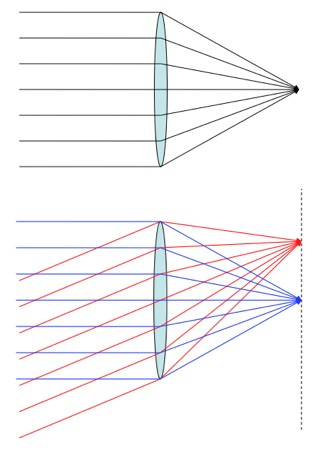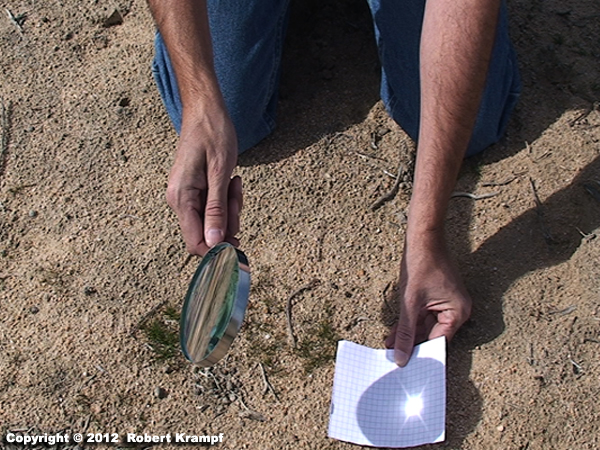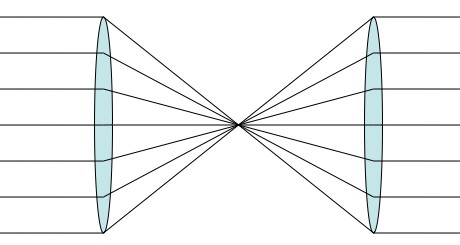Physicist: This is a surprisingly subtle question.
It certainly impossible to create new energy, but there’s nothing to stop you from piping energy from one place to another (say, by running hot water from a boiler to somewhere else). The case of sunlight and a lens is just a matter of controlling where the energy is going in a slightly more abstract way. Focusing light from the Sun doesn’t decrease entropy, because what a lens does (this is a little hand-wavy) is to exchange “direction information” for “position information”. The light from one direction (from the direction of the Sun) gets brought together in one position (the focus).

Perfectly parallel light can be focused at a point, but light from different directions focus at different points. Light from multiple directions can’t be focused to one point.
So, if the light from the Sun weren’t so parallel we wouldn’t be able to use a lens to focus it so well. This is why, on a cloudy day, you can’t burn things with a magnifying lens, even when it’s fairly bright outside. The energy is still there, it’s just scattered.
A little surprisingly, focusing parallel light to a point does not change the entropy of the light, and there’s a cute way to show that. A good rule of thumb for entropy is, “if you can reverse it, then the entropy is constant”. In this case, were you so inclined, you could put a second lens after the first that “re-parallelizes” the light.
It seems as though there should be some way to bring together lots of light beams using lenses and mirrors and… optical cables or something, that would allow you to get a tiny region as hot as you want. But as it happens: no. This is yet another example of the universe having an obnoxious no-go law.
There is a general thermodynamic rule which says that you can never focus energy in such a way that the target is hotter than the source. So, no matter how many mirrors and lenses you have, you can never focus sunlight in such a way that it’ll be hotter than 5800K (the surface temperature of the Sun), but you can get close. In practice that isn’t too useful, because machines tend to break at surface-of-the-sun temperatures.

If you were in the bright spot you’d see a bigger image of the Sun through the lens. With more directions that end in a hot source, the focal point gets hotter.
A good way to think about this is to imagine yourself meandering about in the surface of the Sun, and then imagine yourself lounging at the focus. If you were in the upper layers of the Sun, you’d notice that in every direction you look there’s material radiating at around 5800 Kelvin. As a result, you’d find yourself equilibrating to that same temperature (and burned up real good). If you were at the focus of an elaborate set up of mirrors and whatnot, then you’d be in the same situation, with every direction you look ending with the Sun. And the result is the same.
It feels like there should be some way to cheat, but there just isn’t. If you could find a way to get your target hotter than the source, then you’d have yourself a genuine over-unity device!
The magnifying glass picture is from here.








55 Responses to Q: How do lenses that concentrate light not violate the second law of thermodynamics? If you use a magnifying glass to burn ants, aren’t you making a point hotter than the ambient temperature without losing energy?